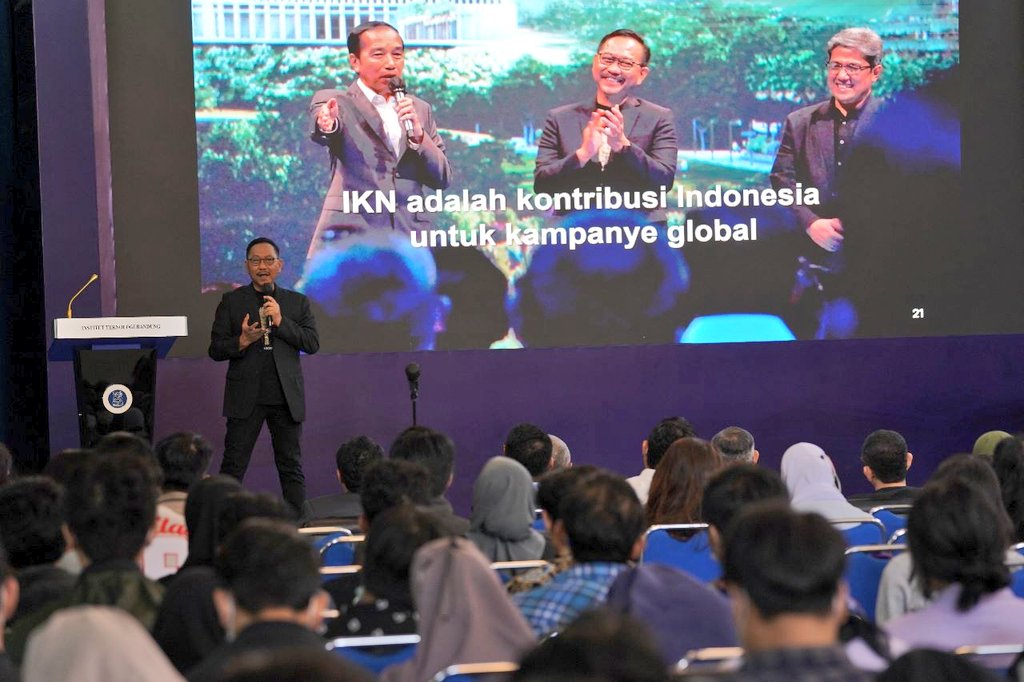Development of Marine Energy Technology as a Step Towards Energy Independence
By Adi Permana
Editor Adi Permana

BANDUNG, itb.ac.id -- Through photos from NOAA Night Maps of Indonesia, we could see the uneven distribution of electricity in Indonesia. It can be seen that the island of Java is very bright, compared to the western part of the island of Sumatra, which looks a little dark. “We could see the disparity between regions in Indonesia in the distribution of electricity,” said Dr. Ahmad Mukhlis Firdaus from Marine Renewable Energy Oxford University and ITB Ocean Engineering.
Indonesia has great potential in the use of renewable energy. “Even though it is still conceptual, one of Indonesia's great potential is in Ocean Thermal Energy Conversion (OTEC),” said Dr. Ahmad citing the keynote speech of Dr. Djoko Siswanto, General Secretary of National Energy Council (NEC). In Europe, offshore wind power is becoming a popular energy source. This energy source is also expected to be popular in Indonesia because it has several areas that have the potential to apply this offshore wind turbine.
The Larantuka Strait is a strait that connects the island of Flores and the island of Adonara in East Nusa Tenggara. This strait became popular for its potential as a source of marine energy. Dr. Ahmad carried out various calculations to get the number of energies produced and the costs required for the 800-meter bridge construction project in the Larantuka Strait. “Normally, the project expense is ranging from 1400 to 3000-pound sterling for each kW, which is one third of Larantuka project cost. I could say that the Larantuka project is a bit expensive,” explained Dr. Ahmad through one of his calculation methods.
Apart from cost, intermittent electricity is also a challenge not only for Indonesia, but also for Europe. Intermittent electricity can occur due to the dependence of the power plant on environmental conditions, such as wind turbines depending on the weather and wind speed. When the supply of electricity is excess in the power generation capacity, the price of electricity becomes negative in the market. “This means we pay people to consume electricity rather than companies receive wages for generating electricity,” explained Dr. Frits Bliek, CEO of Ocean Grazer BV.
One of the solutions for this intermittent electricity is to store the excess energy produced into energy storage technology for later use when the energy produced is less. Dr. Frits explains how the ocean battery from Ocean Grazer BV works as an option to solve this problem. This system uses the concept of pumped hydro energy storage. The system is laid on the seabed so that large dams do not need to be built to hold water.
Prof. Mukhtasor, Head of National Marine Energy Association, explained that we must note that the development of marine energy is not merely a commodity but a collaboration.
“This is not just about investing, but how to do it in a smart way so that we could earn energy sovereignty and independence,” quote Raymon Ferdiansyah, Head of the Alumni Association of Institut Teknologi Bandung Dutch Commissariat (IA-ITB NL) as moderator of this webinar, after Prof. Mukhtasor session.
Reporter: Amalia Wahyu Utami (TPB FTI, 2020)
Translator: Aghisna Syifa Rahmani (TPB SITHS 2020)

.jpg)
.jpg)
.jpg)
.jpg)
.jpg)



